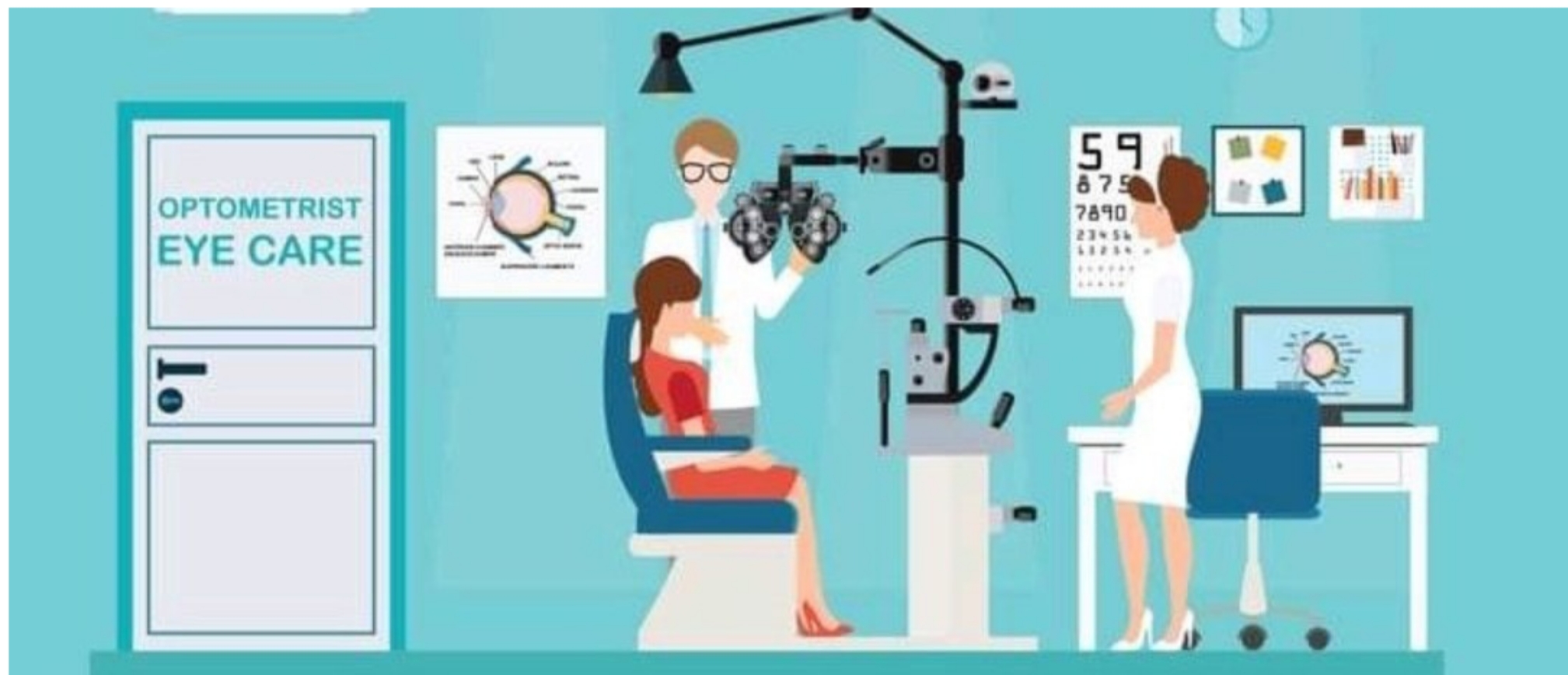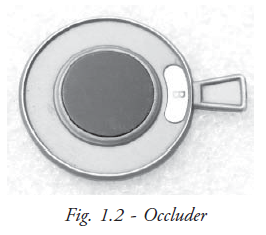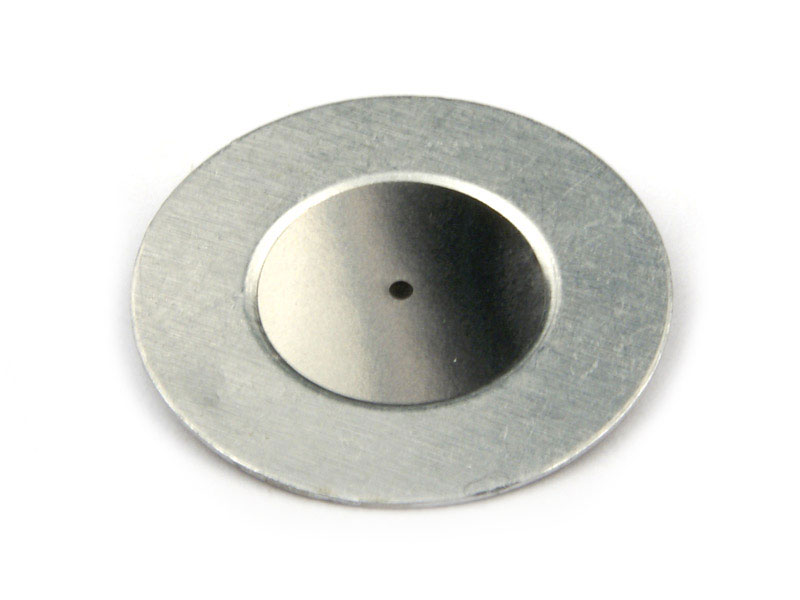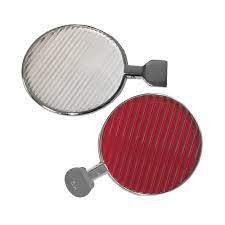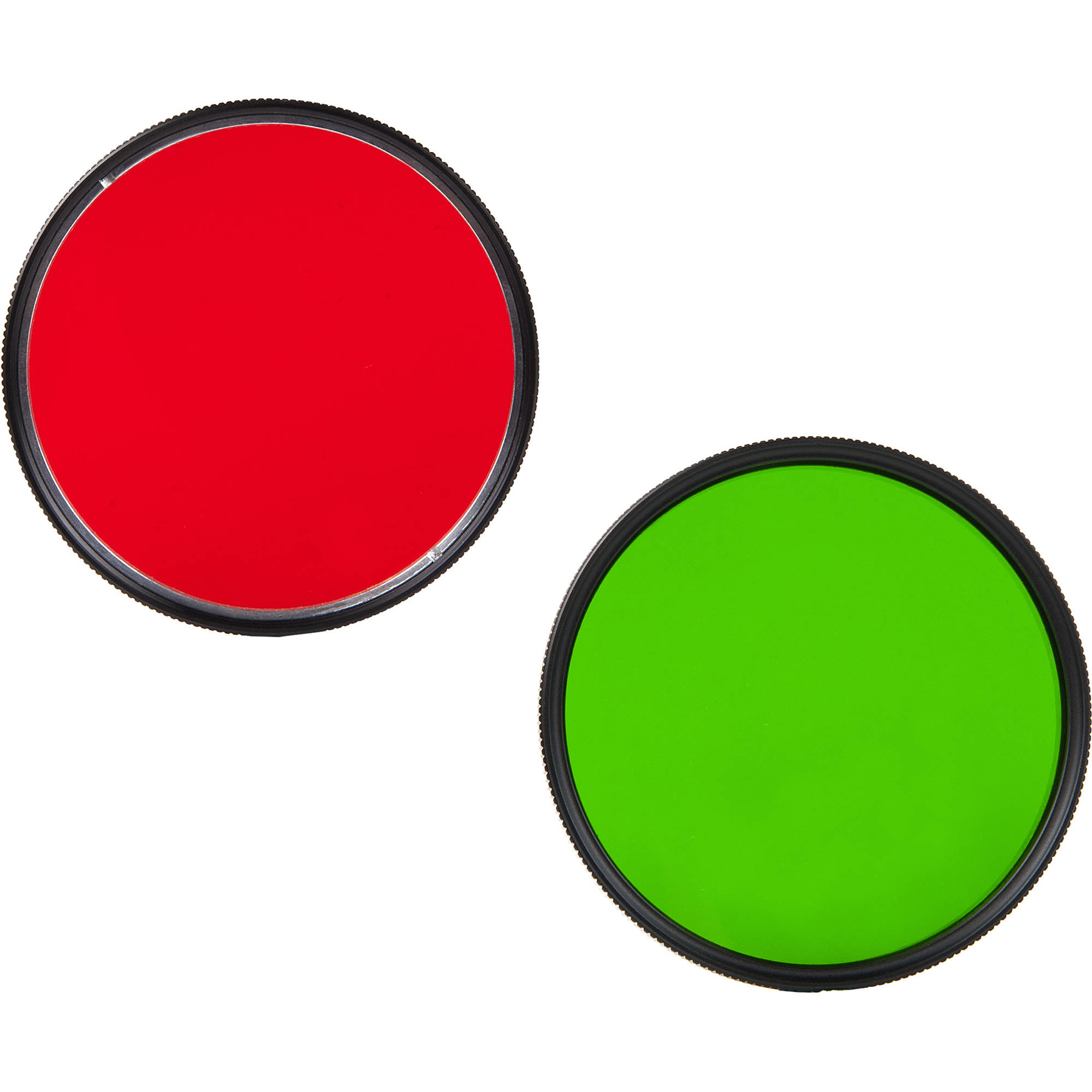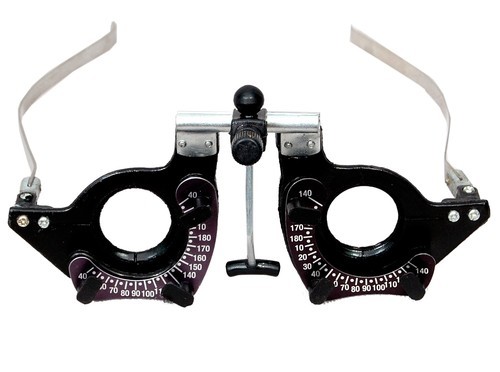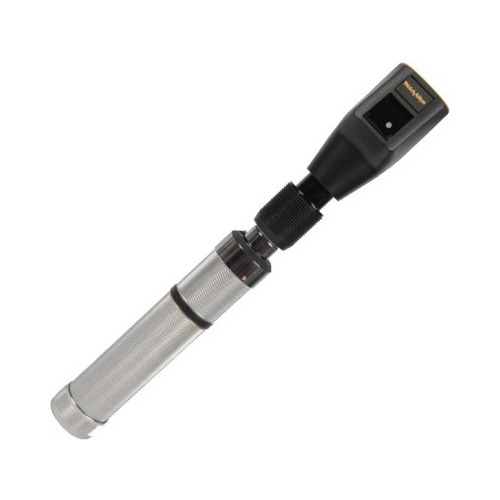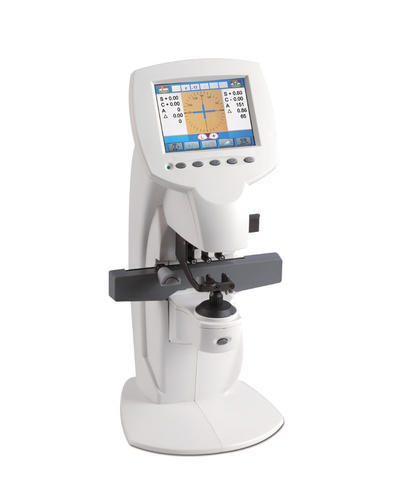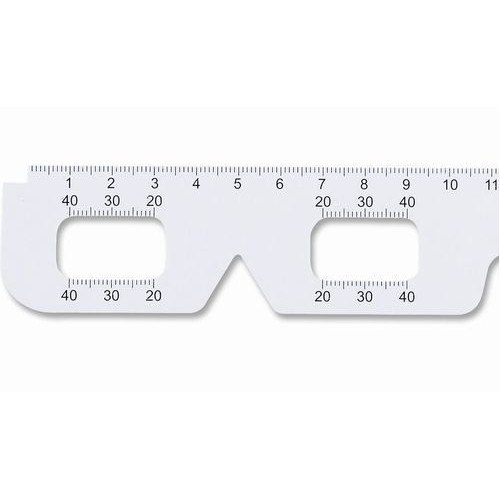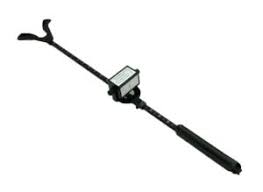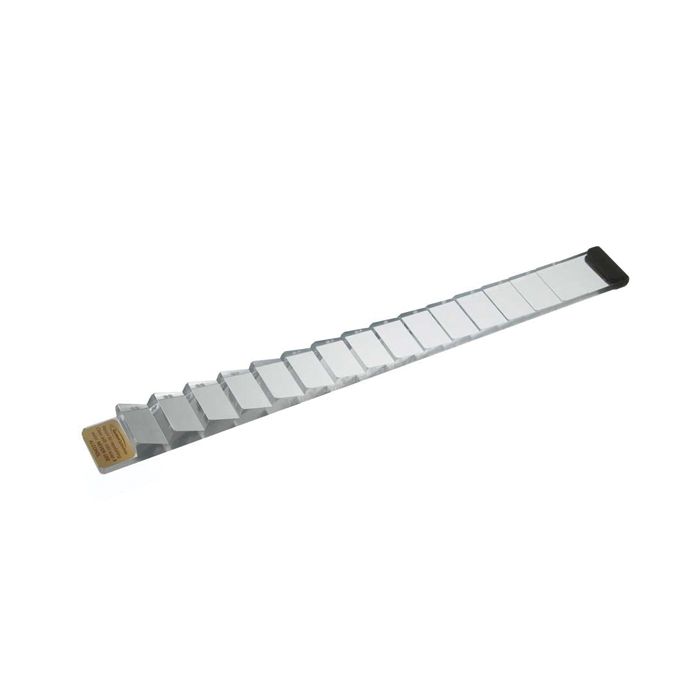Refraction chamber is very essential in eye care practice for doing preliminary vision assessment of all patients and also to know the impact of their diseases/disorders.
A refraction chamber is a technical unit, a semi-dark room 3 or 6 metres in length and 1½ metres in width. Refraction evaluation is done to prescribe suitable glasses for correcting the patient’s vision problems, and for carrying out individualised visual needs in terms of subjective and objective refraction.
Equipments needed in refraction chamber
General equipment
- Plane mirror to reflect the Snellen’s chart letters
- Adjustable illumination set for variable lightconditions mainly for near vision assessment
- Torch for doing the preliminary examination
Clinical equipment
1. Trial frame and standard trial lens set / phoropter
2. Streak retinoscope
3. Snellen’s vision drum / chart projector
4. Near vision chart
5. Auto refractometer
6. Accessory lenses: Occluder, Pinhole disc, JCC, Maddox rod, Stenopic slit and Red and Green and prism lenses
7. Prism bar
8. PD ruler
9. RAF Ruler
10. Color vision chart
11. Topical drugs - mydriatic and cycloplegic agents
12. Lensometer
Trial lens box:
Trial lens set is the primary and most x: essential device in a refraction chamber. A standard trial lens set contains a pair of plus and minus lenses on each power in sphere and cylinder form.
The spherical lenses are available in the ranges from 0.12 D to 20.0 D and the cylindrical lenses from 0.12 D to 6.0 D. The accessory lenses are occluder,
pinhole disc, stenopic slit, Maddox rod, Red and Green goggles and prisms from 0.5 to 12.0 D are also available in the trial set.
All trial lenses are mounted either by a metal or plastic rim with hand grip for easy handling. In cylindrical lens, axis meridian is indicated by special marks and comes without handle for easy rotation. Prism has its apex and base marked on the lens.
Occluder:
Occluder is an opaque disc used to close or cover one eye during refraction examination.
It blocks one eye vision while performing the test on the fellow eye, so that we can check each eye separately.
In occluder, the opaque disc is mounted
either in metal or plastic rim with hand grip for easy handling.
Pinhole:
Pinhole is an opaque disc used for determining whether the decreased vision is due to refractive error or due to pathological diseases of the eye.
It actually reduces the retinal blur and allows the central light rays to reach the macula (retina) which enhances vision. Pin holes are available in the ranges of 1mm, 2mm in diameters.
The optimum size of 1.32 mm is recommended as a standard one. Multiple pinholes are a better option if patient is not able to view through the visual axis and for patients with low vision.
Maddox rod:
Maddox rod is constructed of a series of red cylindrical rods. Each rod acts as a strong ‘+’ cylindrical lens that forms a red streak band before the eye.
It is used to detect the presence of heterophoria and to measure the amount of
heterotropia.
Red and Green filters:
Red and green goggles are mainly used in checking the binocular single vision by worth’s four dot test and stereopsis test using TNO charts.
JCC is a Jackson Cross Cylinder (JCC):
combination of minus and plus cylinder power, the same power located perpendicular to each other and supported with hand grip. The axis of two
cylinders is marked in white and red colors.
The white mark indicates the axis of ‘+’ cyl and the red indicates the axis ‘-’ cyl. It is used for determining the power and for refining the correct axis. Cross cylinders are available in 0.12D, 0.25D, 0.50D and 1.0D powers.
Trial frame:
The trial frame is a metallic / plastic frame for holding the trial lenses before the eye during refraction. Each eye frame is constructed of three cells on front side and one on back side.
The front three surfaces of the trial frame are used for keeping the spherical, cylinder and other accessories i.e. occluder, pinhole etc.
The second front cell is arranged for placing the cylindrical lens and the axis is marked counterclockwise.
The extreme forward cell is molded with three knobs with support to place the lens accessories. Like spectacles, two eye frames are being mounted by an adjustable bridge and sides.
It is necessary to adjust the trial frame depending on the patient’s pupillary distance before starting the refraction test.
Special trial frames are available for children and for doing low vision refraction.
Retinoscope:
Retinoscope is one of the most essential tool for determining the patient’s refractive status objectively . Retinoscope is the only device to estimate the refractive errors of those who are unable to co-operate, particularly children and mentally retarded persons.
Retinoscope is basically available in two types. They are spot retinoscope and streak retinoscope. In the early days, the spot retinoscope was used widely
and now the streak retinoscope is popular among the practitioners because of its simple and easy principles.
Phoropter:
Optometrists utilise the phoropter as one of their primary tools for measuring refractive error and determining the patient's eyeglass numbers.
That machine is called a phoropter, and your optometrist uses it to conduct a retinoscopy. A retinoscopy allows the optometrist to approximate your optimal lens prescription.
Phoropter or refractor is exclusively designed for refraction. It is comprised of spherical lens, cylindrical lens, prisms and all types of auxiliary lenses.
It is also equipped with Jackson cross cylinder. Although the trial lens/frame is used widely, a phoropter is capable of doing all the tests such as JCC test, duochrome test, measurement of phoria and tropia and the binocular vision test.
Auto refractometer:
Auto refractometer represent the most advance technology of measuring the
refractive powers of the eye. It is easily operated even by non technical persons. It provides a quick reliable guideline for the objective refraction.
Colour vision:
Ishihara color vision plates are used for screening for color blindness. This chart helps to detect red and green color deficiencies. It contains 38 plates includes 25 numerals plates and 13 pathway plates.
Lensmeter:
The procedure used to measure the corrective lens powers i.e. sphere, cylinder and axis and prism or the power of rigid contact lenses is called lensometry.
It is performed with a specialized instrument known as lensmeter or focimeter.
PD ruler scale:
The interpupillary distance is measured using a PD ruler. Interpupillary distance is the distance between the center of pupils in millimeters.
This measurement should be obtained for both near and distance for each patient.
RAF ruler:
RAF ruler is the instrument used for measuring the ability of accommodation and
convergence. It also provides the dioptric value of accommodation and convergence of the patient.
Prism bar:
There are two prism bars in a box. One is for measuring horizontal deviation, the other for vertical deviation. These bars are used for finding the fusional range.
OPTOMETRY-SHARP VISION
Optometrist

